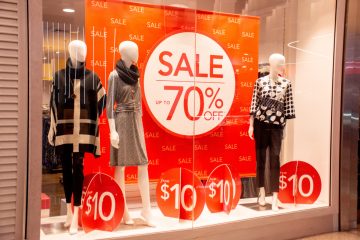Retailers must offer curated experiences to fight choice overload

Consumers often assume that the more choice, the better. Having “hyperchoice” at the click of a mouse is seen as one of the big advantages of shopping online over shopping in a physical store. And it has caused physical retailers to adopt “endless aisle” strategies in a bid to compete with online rivals.
But do consumers really want so much choice?
Research experiments have frequently shown that hyperchoice creates bad phsychological effects on consumers – see this research paper, for example. When given less options, customers make decisions quicker and have fewer regrets about their purchase.
And there are situations where more is definitely not necessarily better – on a mobile phone, for example.
Big catalogs, small devices
The small screen means that the customer quickly tire of clicking or scrolling through seemingly endless pages of products. While many people will use their mobile phone for initial product discovery, very few complete the purchose on a mobile.
According to a report by Qubit, 67 percent of consumers use their mobile devices to view product pages, but only 13 percent add products to shopping carts when using their mobile phones.
When Qubit asked consumers to rank the factors most likely to encourage them to make a purchase on their phone, the most common request was for “a faster or easier browsing experience” cited with 47 percent of respondents, while “finding exactly what I want more easily” came a close second with 44 percent.
The research concludes that, often, the larger the range of products in an online catalog, the harder it is for users to find what they’re looking for.
Online choice overload
So, perhaps it is not such a good idea for brick-and-mortar retailers to try to imitate tthe seemingly infinite choices of online shopping.
The concept of an endless aisle was developed precisely to do just that: to allow a brick-and-mortar retailer to sell a much wider range of items by accessing inventory not helod in-store. Instead, the items are either held in a central warehouse or stocked by external suppliers, and are ordered either directly by the customer using an in-store touchscreen or by a store associate.
The theory of the endless aisle is potentially appealing to many retailers struggling to compete with online competitors. But making it work well in practice creates considerable challenges for retailers.
But the main problem is that brick-and-mortar retailers will never be able to compete with online competition in the breadth of their product selection.
So perhaps they should instead put more emphasis on curation, helping customers understand that their stores contain a carefully selected range of the most appealing items in a given a category.
Sadly, this is not really happening at the moment. According to a report from RSR Research, creating a differentiating assortment is bottom of the list in the challenges cited by retailers. Only 11 percent of respondents said it was one of their three most pressing challenges.
But it is clear that brick-and-mortar retailers that wish to give customers a reason to visit their stores must differentiate themselves from online competition. One way to do that is through curation, offering customers a selection of products that are tailored to their lifestyles and personal preferences.
To find out how Openbravo can help speciality retailers successfully transform their stores we invite your to watch our webinar Transforming the Store and Customer Experience for an Omnichannel World.




No Comment